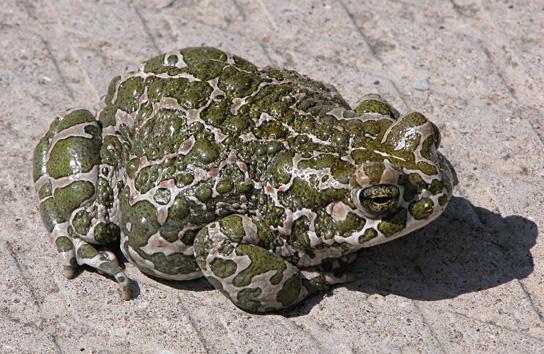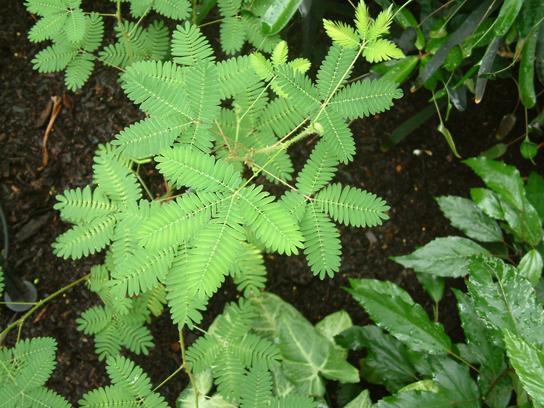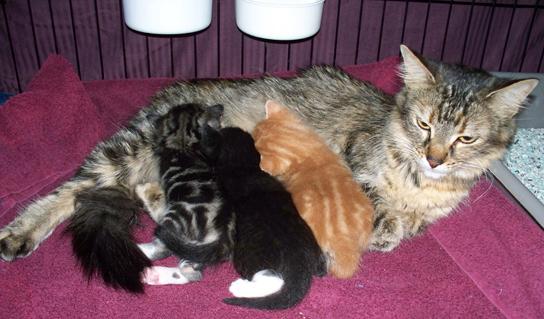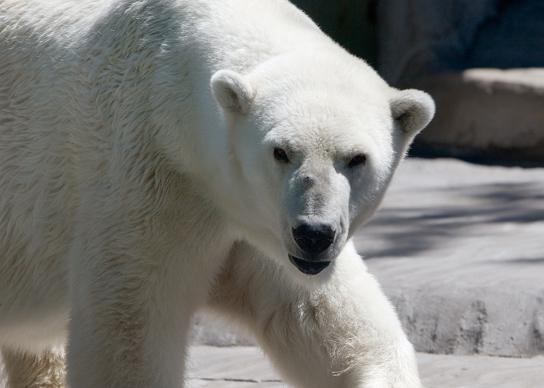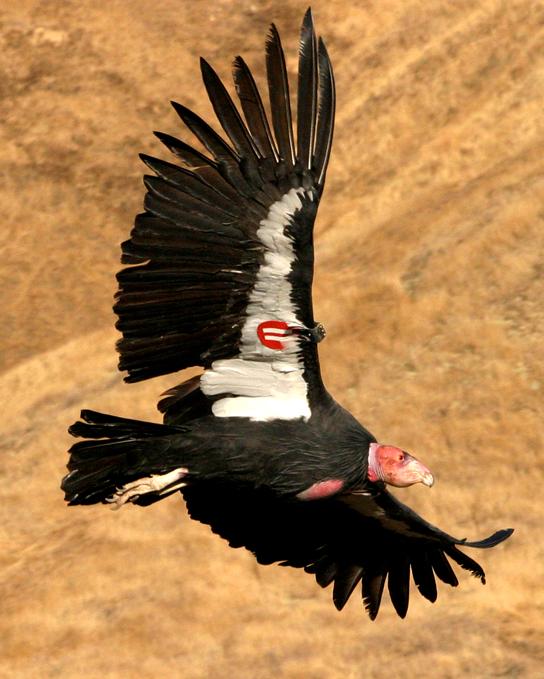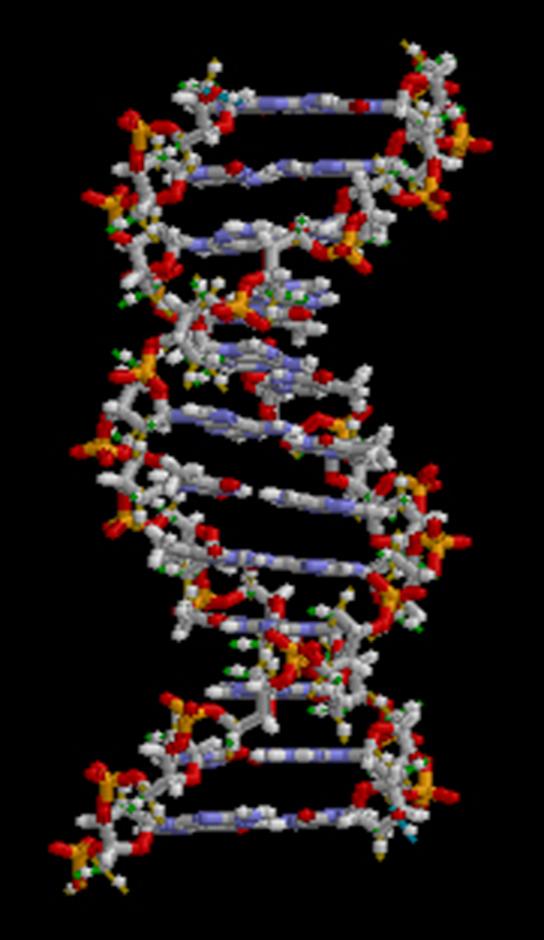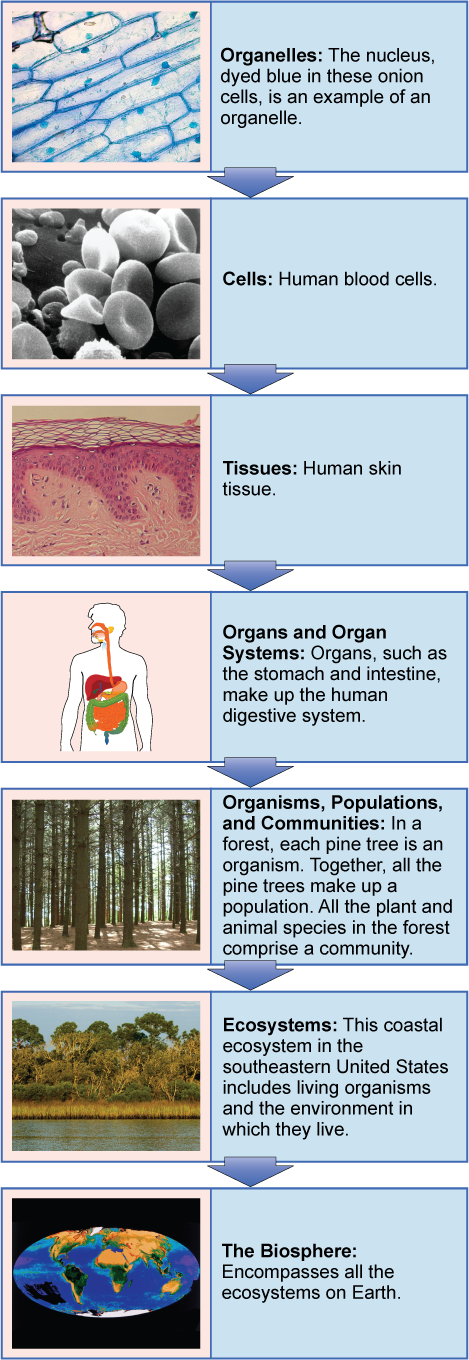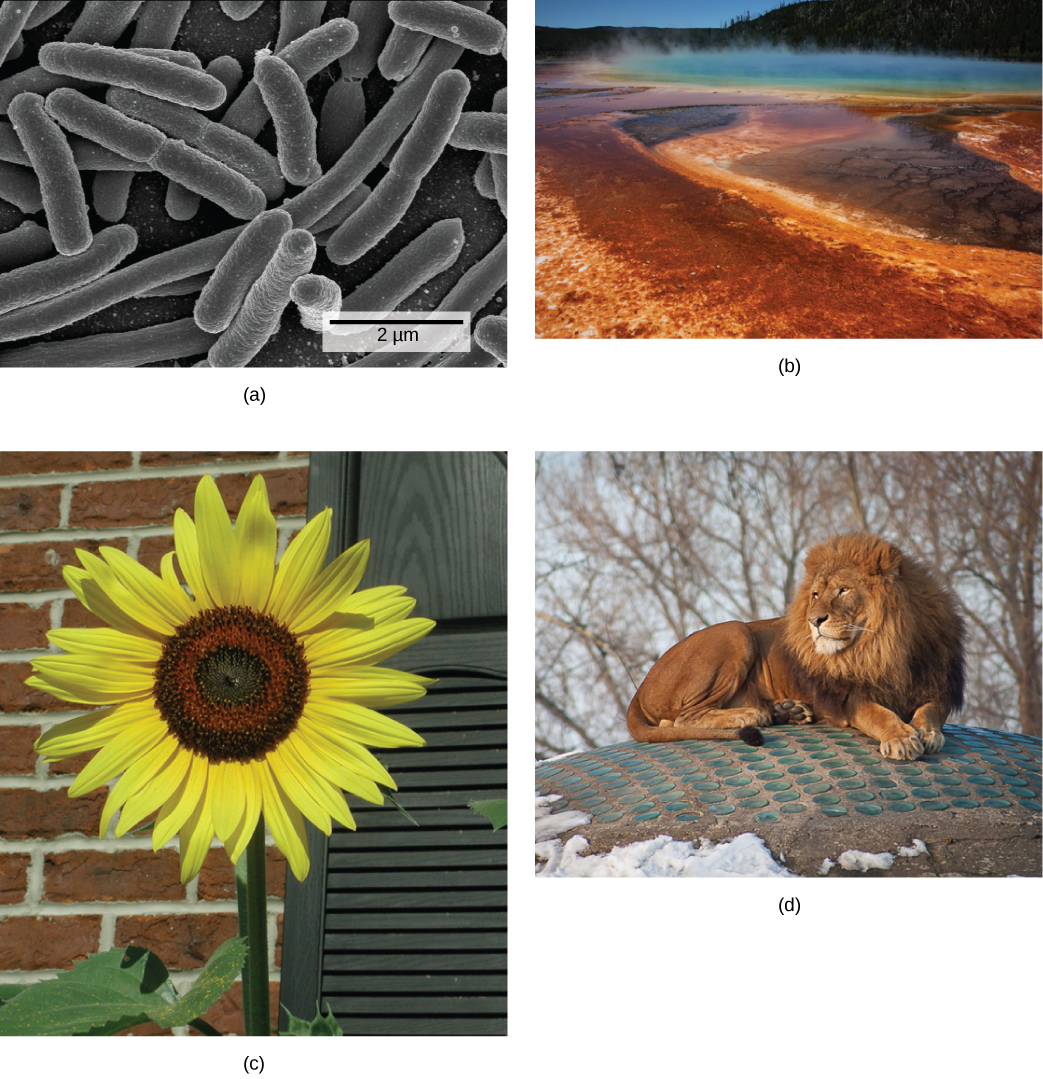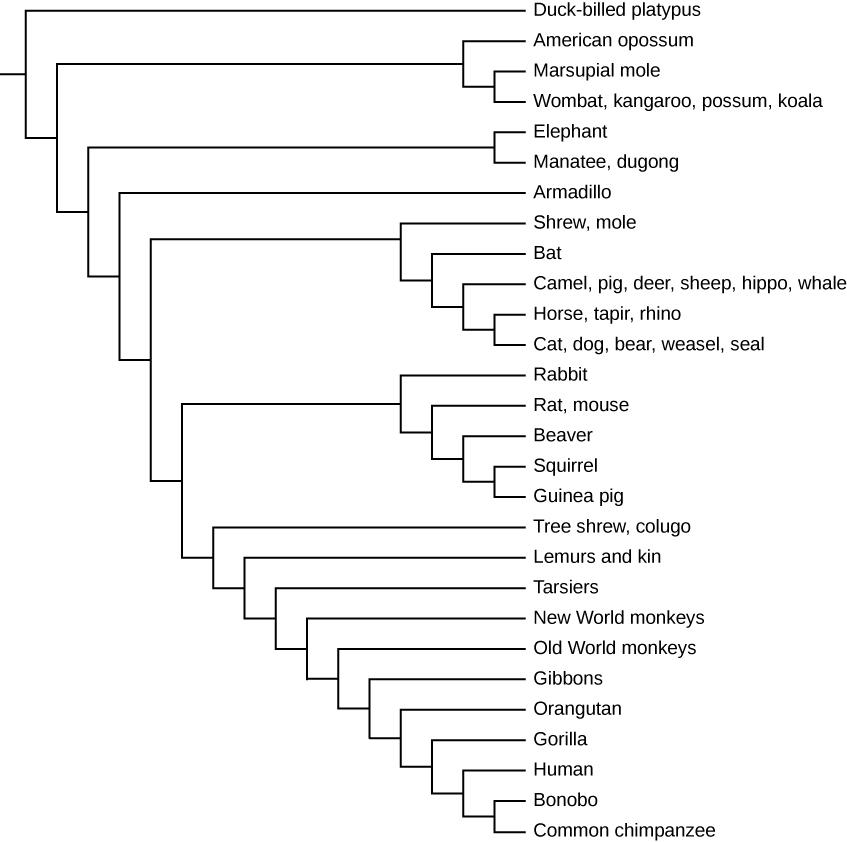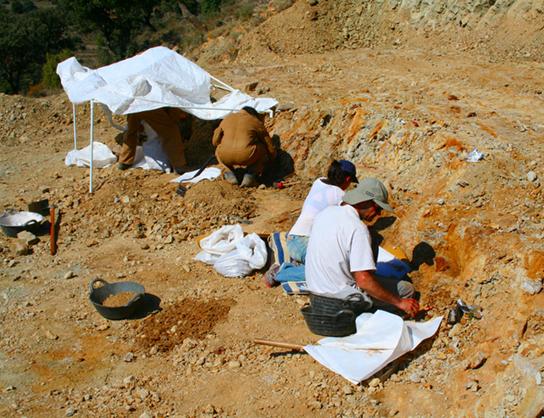Learning Objectives
Learning Objectives
In this section, you will explore the following questions:
- What are the properties of life?
- What are the levels of organization among living things?
- How is a phylogenetic tree recognized and interpreted?
Connection for AP® Courses
Connection for AP® Courses
The AP® Biology curriculum is organized around four major themes called the Big Ideas that apply to all levels of biological organization—from molecules and cells to populations and ecosystems. Each Big Idea identifies key concepts called Enduring Understandings, and Essential Knowledges, along with supporting examples. Simple descriptions define the focus of each Big Idea: Big Idea 1, Evolution; Big Idea 2, Energy and Homeostasis; Big Idea 3, Information and Communication; and Big Idea 4, Systems and Interactions. Evolution explains both the unity and diversity of life, Big Idea 1, and all organisms require energy and molecules to carry out life functions, such as growth and reproduction, Big Idea 2. Living systems also store, transmit, and respond to information, from DNA sequences to nerve impulses and behaviors, Big Idea 3. All biological systems interact, and these interactions result in emergent properties and characteristics unique to life, Big Idea 4.
The redesigned AP® Biology course also emphasizes the investigative practices that students should master. Scientific inquiry usually uses a series of steps to gain new knowledge. Scientific methods with an observation and follows with a hypothesis to explain the observation; then experiments are conducted to test the hypothesis, gather results, and draw conclusions from data. The AP® program has identified seven major categories of Science Practices, which can be described by short phrases: using representations and models to communicate information and solve problems; using mathematics appropriately; engaging in questioning; planning and implementing data collection strategies; analyzing and evaluating data; justifying scientific explanations; and connecting concepts. A Learning Objective merges content with one or more of the seven Science Practices.
The information presented and the examples highlighted in this section support concepts and Learning Objectives outlined in Big Idea 1 of the AP® Biology Curriculum. The Learning Objectives listed in the Curriculum Framework provide a transparent foundation for the AP® Biology course, an inquiry-based laboratory experience, instructional activities, and AP® Exam questions. A Learning Objective merges required content with one or more of the seven Science Practices.
| Big Idea 1 | The process of evolution drives the diversity and unity of life. |
| Enduring Understanding 1.B | Organisms are linked by lines of descent from common ancestry. |
| Essential Knowledge | 1.B.1 Organisms share many conserved core processes and features that evolved and are widely distributed among organisms today. |
| Science Practice | 3.1 The student can pose scientific questions. |
| Learning Objective | 1.14 The student is able to pose scientific questions that correctly identify essential properties of share, core life processes that provide insights into the history of life on Earth. |
| Science Practice | 5.3 The student can evaluate the evidence provided by data sets in relation to a particular scientific question. |
| Learning Objective | 1.18 The student is able to evaluate evidence provided by a data set in conjunction with a phylogenetic tree or simply cladogram to determine evolutionary history and speciation. |
In addition, content from this chapter is addressed in the AP Biology Laboratory Manual in the following lab(s):
1 Scientific Methods and Measurements
2 Introduction to Microscopy
Biology is the science that studies life, but what exactly is life? This may sound like a silly question with an obvious response, but it is not always easy to define life. For example, a branch of biology called virology studies viruses, which exhibit some of the characteristics of living entities but lack others. It turns out that although viruses can attack living organisms, cause diseases, and even reproduce, they do not meet the criteria that biologists use to define life. Consequently, virologists are not biologists, strictly speaking. Similarly, some biologists study the early molecular evolution that gave rise to life; since the events that preceded life are not biological events, these scientists are also excluded from biology in the strict sense of the term.
From its earliest beginnings, biology has wrestled with three questions: What are the shared properties that make something alive? And once we know something is alive, how do we find meaningful levels of organization in its structure? And, finally, when faced with the remarkable diversity of life, how do we organize the different kinds of organisms so that we can better understand them? As new organisms are discovered consisting of cells, tissues, organs, and organ systems every day, biologists continue to seek answers to these and other questions.
Properties of Life
Properties of Life
All living organisms share several key characteristics or functions: order, sensitivity or response to the environment, reproduction, adaptation, growth and development, regulation, homeostasis, energy processing, and evolution. When viewed together, these nine characteristics serve to define life.
Order
Organisms are highly organized, coordinated structures that consist of one or more cells. Even very simple, single-celled organisms are remarkably complex. Inside each cell, atoms make up molecules, which in turn make up cell organelles and other cellular inclusions. In multicellular organisms (Figure 1.10), similar cells form tissues. Tissues, in turn, collaborate to create organs (body structures with a distinct function). Organs work together to form organ systems.
Sensitivity or Response to Stimuli
Organisms respond to diverse stimuli. For example, plants can bend toward a source of light, climb on fences and walls, or respond to touch (Figure 1.11). Even tiny bacteria can move toward or away from chemicals (a process called chemotaxis) or light (phototaxis). Movement toward a stimulus is considered a positive response, while movement away from a stimulus is considered a negative response.
Link to Learning
Watch this video to see how plants respond to a stimulus—from opening to light, to wrapping a tendril around a branch, to capturing prey.
Which example most clearly shows a way that humans can respond directly to a change in the environment?
- We shiver when we are cold and sweat when we are hot.
- We walk by putting our front leg forward and pushing off with our back leg.
- We are able to breathe in and out unconsciously.
- Our hair and fingernails grow at a constant rate over time.
Reproduction
Single-celled organisms reproduce by first duplicating their DNA, and then dividing it equally as the cell prepares to divide to form two new cells. Multicellular organisms often produce specialized reproductive germline cells that will form new individuals. When reproduction occurs, genes containing DNA are passed along to an organism’s offspring. These genes ensure that the offspring will belong to the same species and will have similar characteristics, such as size and shape.
Growth and Development
Organisms grow and develop following specific instructions coded for by their genes. These genes provide instructions that will direct cellular growth and development, ensuring that a species’ young (Figure 1.12) will grow up to exhibit many of the same characteristics as its parents.
Regulation
Even the smallest organisms are complex and require multiple regulatory mechanisms to coordinate internal functions, respond to stimuli, and cope with environmental stresses. Two examples of internal functions regulated in an organism are nutrient transport and blood flow. Organs (groups of tissues working together) perform specific functions, such as carrying oxygen throughout the body, removing wastes, delivering nutrients to every cell, and cooling the body.
Homeostasis
In order to function properly, cells need to have appropriate conditions such as proper temperature, pH, and appropriate concentration of diverse chemicals. These conditions may, however, change from one moment to the next. Organisms are able to maintain internal conditions within a narrow range almost constantly, despite environmental changes, through homeostasis (literally, steady state) the ability of an organism to maintain constant internal conditions. For example, an organism needs to regulate body temperature through a process known as thermoregulation. Organisms that live in cold climates, such as the polar bear (Figure 1.13), have body structures that help them withstand low temperatures and conserve body heat. Structures that aid in this type of insulation include fur, feathers, blubber, and fat. In hot climates, organisms have methods (such as perspiration in humans or panting in dogs) that help them to shed excess body heat.
Energy Processing
All organisms use a source of energy for their metabolic activities. Some organisms capture energy from the sun and convert it into chemical energy in food; others use chemical energy in molecules they take in as food (Figure 1.14).
Science Practice Connection for AP® Courses
Activity
Select an ecosystem of your choice, such as a tropical rain forest, desert, or coral reef, and create a representation to show how several organisms found in the ecosystem interact with each other and the environment. Then, using similarities and differences among the organisms make a hypothesis about their relatedness.
Consider the levels of organization of the biological world and create a diagram to place these items in order from the smallest level of organization to the most encompassing: skin cell, planet Earth, elephant, tropical rain forest, water molecule, liver, wolf pack, and oxygen atom. Justify the reason why you placed the items in the hierarchy that you did.
Think About It
Homeostasis—the ability to stay the same–is a feature shared by all living organisms. You go for a long walk on a hot day. Describe how homeostasis keeps your body healthy even though you are sweating profusely. Then describe an example of an adaptation that evolved in a desert plant or animal that allows them to survive in extreme temperatures.
Levels of Organization of Living Things
Levels of Organization of Living Things
Living things are highly organized and structured, following a hierarchy that can be examined on a scale from small to large. The atom is the smallest and most fundamental unit of matter. It consists of a nucleus surrounded by electrons. Atoms form molecules. A molecule is a chemical structure consisting of at least two atoms held together by one or more chemical bonds. Many molecules that are biologically important are macromolecules, large molecules that are typically formed by polymerization (a polymer is a large molecule that is made by combining smaller units called monomers, which are simpler than macromolecules). An example of a macromolecule is deoxyribonucleic acid (DNA) (Figure 1.15), which contains the instructions for the structure and functioning of all living organisms.
Link to Learning
Watch this video that animates the three-dimensional structure of the DNA molecule shown in Figure 1.15.
The word helix means "spiral". What does this tell you about the structure of DNA, which is a double helix macromolecule?
- The nucleotides of the two strands bond together with spiral bonds.
- A double-stranded DNA molecule has two spiral strands bound together.
- DNA is a double helix because it has two spiral strands held together like a spiral staircase.
- Nucleotides are spiral-shaped molecules that bond together to form DNA.
Some cells contain aggregates of macromolecules surrounded by membranes; these are called organelles. Organelles are small structures that exist within cells. Examples of organelles include mitochondria and chloroplasts, which carry out indispensable Functions: Mitochondria produce energy to power the cell, while chloroplasts enable green plants to utilize the energy in sunlight to make sugars. All living things are made of cells; the cell itself is the smallest fundamental unit of structure and function in living organisms. This requirement is why viruses are not considered living: they are not made of cells. To make new viruses, they have to invade and hijack the reproductive mechanism of a living cell; only then can they obtain the materials they need to reproduce. Some organisms consist of a single cell and others are multicellular. Cells are classified as prokaryotic or eukaryotic. Prokaryotes are single-celled or colonial organisms that do not have membrane-bound nuclei; in contrast, the cells of eukaryotes do have membrane-bound organelles and a membrane-bound nucleus.
In larger organisms, cells combine to make tissues, which are groups of similar cells carrying out similar or related functions. Organs are collections of tissues grouped together performing a common function. Organs are present not only in animals but also in plants. An organ system is a higher level of organization that consists of functionally related organs. Mammals have many organ systems. For instance, the circulatory system transports blood through the body and to and from the lungs; it includes organs such as the heart and blood vessels. Organisms are individual living entities. For example, each tree in a forest is an organism. Single-celled prokaryotes and single-celled eukaryotes are also considered organisms and are typically referred to as microorganisms.
All the individuals of a species living within a specific area are collectively called a population. For example, a forest may include many pine trees. All of these pine trees represent the population of pine trees in this forest. Different populations may live in the same specific area. For example, the forest with the pine trees includes populations of flowering plants and also insects and microbial populations. A community is the sum of populations inhabiting a particular area. For instance, all of the trees, flowers, insects, and other populations in a forest form the forest’s community. The forest itself is an ecosystem. An ecosystem consists of all the living things in a particular area together with the abiotic, non-living parts of that environment such as nitrogen in the soil or rain water. At the highest level of organization (see Figure 1.15), the biosphere is the collection of all ecosystems, and it represents the zones of life on earth. It includes land, water, and even the atmosphere to a certain extent.
Visual Connection
- Tissues exist within organs which exist within organ systems.
- Communities exist within populations which exist within ecosystems.
- Organelles exist within cells which exist within tissues.
- Communities exist within ecosystems which exist in the biosphere.
The Diversity of Life
The Diversity of Life
The fact that biology, as a science, has such a broad scope has to do with the tremendous diversity of life on earth. The source of this diversity is evolution, the process of gradual change during which new species arise from older species. Evolutionary biologists study the evolution of living things in everything from the microscopic world to ecosystems.
The evolution of various life forms on Earth can be summarized in a phylogenetic tree (Figure 1.17). A phylogenetic tree is a diagram showing the evolutionary relationships among biological species based on similarities and differences in genetic or physical traits or both. A phylogenetic tree is composed of nodes and branches. The internal nodes represent ancestors and are points in evolution when, based on scientific evidence, an ancestor is thought to have diverged to form two new species. The length of each branch is proportional to the time elapsed since the split.
Evolution Connection
Carl Woese and the Phylogenetic Tree
In the past, biologists grouped living organisms into five kingdoms: animals, plants, fungi, protists, and bacteria. The organizational scheme was based mainly on physical features, as opposed to physiology, biochemistry, or molecular biology, all of which are used by modern systematics. The pioneering work of American microbiologist Carl Woese in the early 1970s has shown, however, that life on Earth has evolved along three lineages, now called domains—Bacteria, Archaea, and Eukarya. The first two are prokaryotic cells with microbes that lack membrane-enclosed nuclei and organelles. The third domain contains the eukaryotes and includes unicellular microorganisms together with the four original kingdoms, excluding bacteria). Woese defined Archaea as a new domain, and this resulted in a new taxonomic tree (see Figure 1.17). Many organisms belonging to the Archaea domain live under extreme conditions and are called extremophiles. To construct his tree, Woese used genetic relationships rather than similarities based on morphology, or shape.
Woese’s tree was constructed from comparative sequencing of the genes that are universally distributed, present in every organism, and conserved, meaning that these genes have remained essentially unchanged throughout evolution. Woese’s approach was revolutionary because comparisons of physical features are insufficient to differentiate between the prokaryotes that appear fairly similar in spite of their tremendous biochemical diversity and genetic variability (Figure 1.18). The comparison of homologous DNA and RNA sequences provided Woese with a sensitive device that revealed the extensive variability of prokaryotes, and which justified the separation of the prokaryotes into two domains: Bacteria and Archaea.
- Archaea, because fish are multicellular
- Eukarya, because fish are multicellular
- Archaea, because fish are single-celled
- Eukarya because fish are single-celled
Everyday Connection for AP® Courses
Phylogenetic trees can represent traits that are derived or lost due to evolution. One example is the absence of legs in some sea mammals. For example, Cetaceans are marine mammals that include toothed whales, such as dolphins and killer whales, and baleen whales, such as humpback whales. Cetaceans are descended from even-toed ungulates and share a common ancestry with the hippopotamus, cow, sheep, camel, and pig.
Based on this phylogenetic tree, which of the following animal is the most closely related to a horse?
- An armadillo
- A camel
- A bat
- A cat
Branches of Biological Study
Branches of Biological Study
The scope of biology is broad and therefore contains many branches and subdisciplines. Biologists may pursue one of those subdisciplines and work in a more focused field. For instance, molecular biology and biochemistry study biological processes at the molecular and chemical level, including interactions among molecules such as DNA, RNA, and proteins, as well as the way they are regulated. Microbiology, the study of microorganisms, is the study of the structure and function of organisms that cannot be seen with the naked eye. It is quite a broad branch itself, and depending on the subject of study, there are also microbial physiologists, ecologists, and geneticists, among others.
Career Connection
Forensic science is the application of science to answer questions related to the law. Biologists as well as chemists and biochemists can be forensic scientists. Forensic scientists provide scientific evidence for use in courts, and their job involves examining trace materials associated with crimes. Interest in forensic science has increased in the last few years, possibly because of popular television shows that feature forensic scientists on the job. Also, the development of molecular techniques and the establishment of DNA databases have expanded the types of work that forensic scientists can do. Their work involves analyzing samples such as hair, blood, and other body fluids and also processing DNA (Figure 1.20) found in many different environments and materials. Forensic scientists also analyze other biological evidence left at crime scenes, such as insect larvae or pollen grains. Students who want to pursue careers in forensic science will most likely be required to take chemistry and biology courses as well as some intensive math courses.
Another field of biological study, neurobiology, studies the biology of the nervous system. Although it is considered a branch of biology, it is also recognized as an interdisciplinary field of study known as neuroscience. Because of its interdisciplinary nature, this subdiscipline studies different functions of the nervous system using molecular, cellular, developmental, medical, and computational approaches.
Paleontology, another branch of biology, uses fossils to study life’s history (Figure 1.21). Zoology and botany are the study of animals and plants, respectively. Biologists can also specialize as biotechnologists, ecologists, or physiologists, to name just a few areas. This is just a small sample of the many fields that biologists can pursue.
Biology is the culmination of the achievements of the natural sciences from their inception to today. Excitingly, it is the cradle of emerging sciences, such as the biology of brain activity, genetic engineering of custom organisms, and the biology of evolution that uses the laboratory tools of molecular biology to retrace the earliest stages of life on earth. A scan of news headlines—whether reporting on immunizations, a newly discovered species, sports doping, or a genetically-modified food—demonstrates the ways biology is active in and important to our everyday world.
Disclaimer
This section may include links to websites that contain links to articles on unrelated topics. See the preface for more information.
